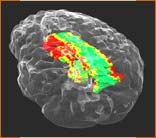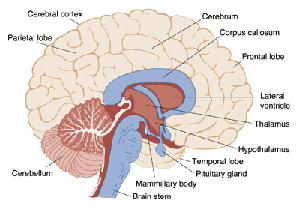3) SHIFTING PTSD EMOTIONS, FROM RIGHT TO LEFT BRAIN
BRAIN HEMISPHERES
 As we become proficient in blocking intrusive thoughts, we can also learn to shift upsetting PTSD (post-traumatic stress disorder) emotions that have been stored in the right hemisphere of the brain into the left, where they are processed differently.
As we become proficient in blocking intrusive thoughts, we can also learn to shift upsetting PTSD (post-traumatic stress disorder) emotions that have been stored in the right hemisphere of the brain into the left, where they are processed differently.
We accomplish this by paying attention to our feelings and sensations, while recalling a traumatic event and stimulating the brain bilaterally with acupressure.
Research to date, has failed to support the hypothesis that back and forth eye movements are critical to the success of therapy involving imagined exposure to traumatic events.
However, we believe that moving our closed eyes to where the body is being touched could visually enhance the bilateral brain stimulation created by the sound, touch and motion instructions in our videos.
TRAUMA & THE BRAIN
 When a person becomes very upset by an upsetting emotional trauma, there is an overload on the brain and information processing is blocked, with a resulting change of neural elements. The disturbing event can also prevent REM sleep, the nightly sleep that helps people process normal emotional events of the day.
When a person becomes very upset by an upsetting emotional trauma, there is an overload on the brain and information processing is blocked, with a resulting change of neural elements. The disturbing event can also prevent REM sleep, the nightly sleep that helps people process normal emotional events of the day.
The neurological blockage causes the incident to remain in the body in its anxiety-producing form, along with the original thoughts, feelings, flashbacks or nightmares. Bilateral brain stimulation seems to help unblock the neural channels in the brain, increase REM sleep, and allow the brain to complete information processing.
VIDEO 3-BILATERAL BRAIN STIMULATION
In Video 3, entitled “Bilateral Brain Stimulation,” we show how emotional meridians can be stimulated bilaterally, with acupressure on the left and right sides of the body. In this way, we believe that the limbic system of our brain, which is mainly responsible for our emotions, can be tuned on both sides at the same time.
Once you you have become proficient in practicing the protocols in Video 3,
click here for 4) ACCEPTING PTSD